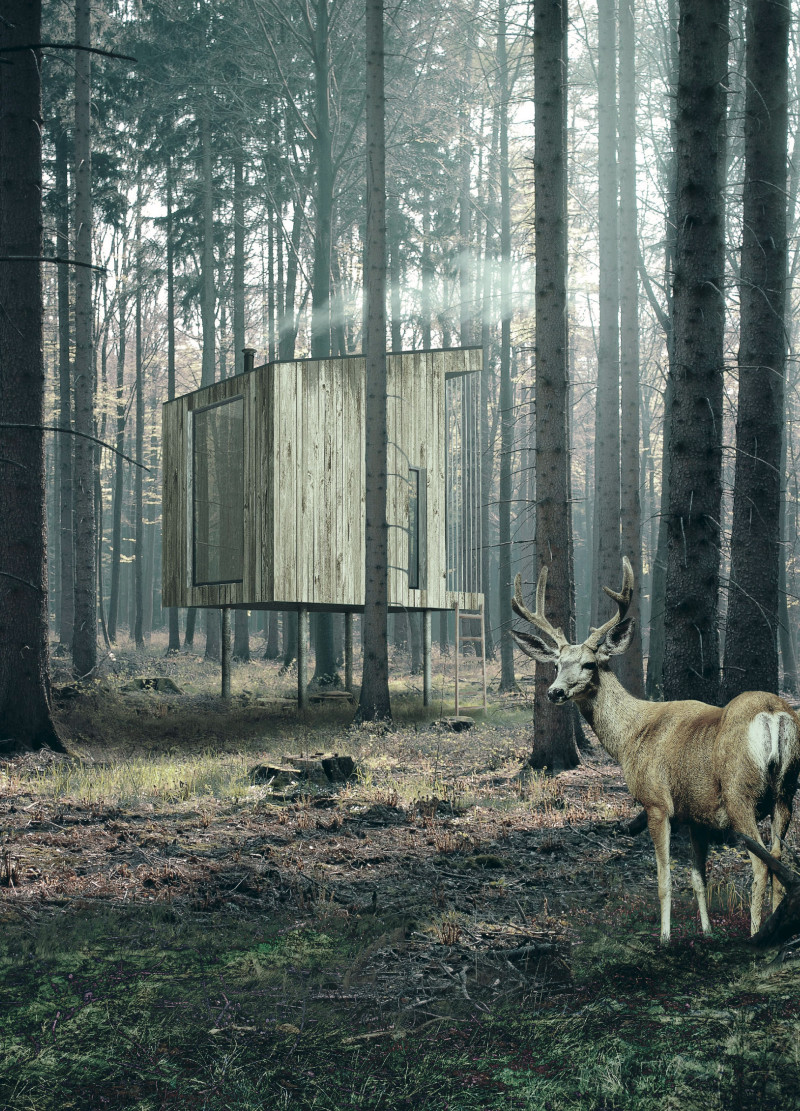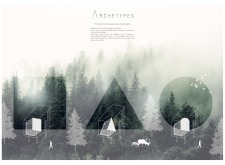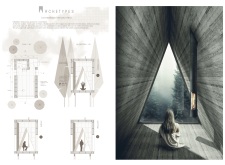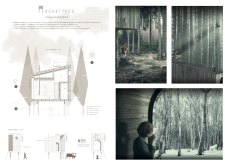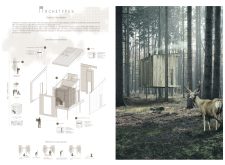5 key facts about this project
Functionally, the project serves as a series of cabins that facilitate personal reflection and meditation. Each structure is intentionally designed to evoke a sense of tranquility, allowing inhabitants to immerse themselves in the surrounding environment. These cabins are positioned within a wooded landscape, where the natural terrain enhances the experience of seclusion and peace. The layout encourages visitors to retreat from their daily routines and engage in self-discovery through a harmonious blend of architecture and nature.
One of the critical aspects of the project is its thoughtful materiality. The primary material used is sustainably sourced wood, which complements the natural environment while promoting ecological responsibility. The warmth of wood creates an inviting atmosphere, fostering a sense of comfort and connection to the landscape. Additionally, concrete is used for specific structural elements, providing stability and a sense of permanence to the overall design. Large glass windows are strategically incorporated, allowing natural light to flood the interiors and offering panoramic views of the forest, thereby blurring the lines between indoor and outdoor spaces.
Unique design approaches within "Archetypes" include the elevation of cabins on stilts, which minimizes ground disturbance and enhances drainage while providing unobstructed views of the surrounding landscape. This elevating strategy respects the local ecology and contributes to the aesthetic appeal of the cabins. Furthermore, the inclusion of dedicated meditation rooms within each cabin serves as a focal point for introspection. These spaces are carefully designed to maximize tranquility, featuring sound-absorbing materials to ensure silence and calm focus. An integral aspect of these meditation spaces is the fireplace, which not only generates warmth but also symbolizes comfort and communal gathering.
The adaptability of the design is also a noteworthy feature; it allows for flexible use of the interiors. The cabins can be reconfigured to suit the needs of their occupants, whether through movable partitions or adaptable furniture. This design flexibility promotes the project’s goal of facilitating personal exploration and meditation while maintaining simplicity.
The relationship between the architecture and its natural surroundings is central to this project. The design intentionally incorporates large windows that frame the landscape, encouraging a dynamic interaction with the seasonal changes of the forest. By engaging with the elements of nature, occupants can experience a sense of calm and groundedness unparalleled in more urban settings.
In summary, "Archetypes" reflects a well-considered architectural response to the need for peaceful retreat spaces. Its geometric clarity, thoughtful material choices, and harmonious integration with the surrounding environment underscore its purpose as a meditative haven. The project showcases a commitment to sustainability and adaptability while fostering a profound connection between architecture and nature. For those interested in exploring the nuances of this project further, including architectural plans, sections, and design ideas, a closer examination of the project presentation is encouraged. An understanding of these elements provides valuable insights into the intentions and outcomes of this thoughtfully designed project.


